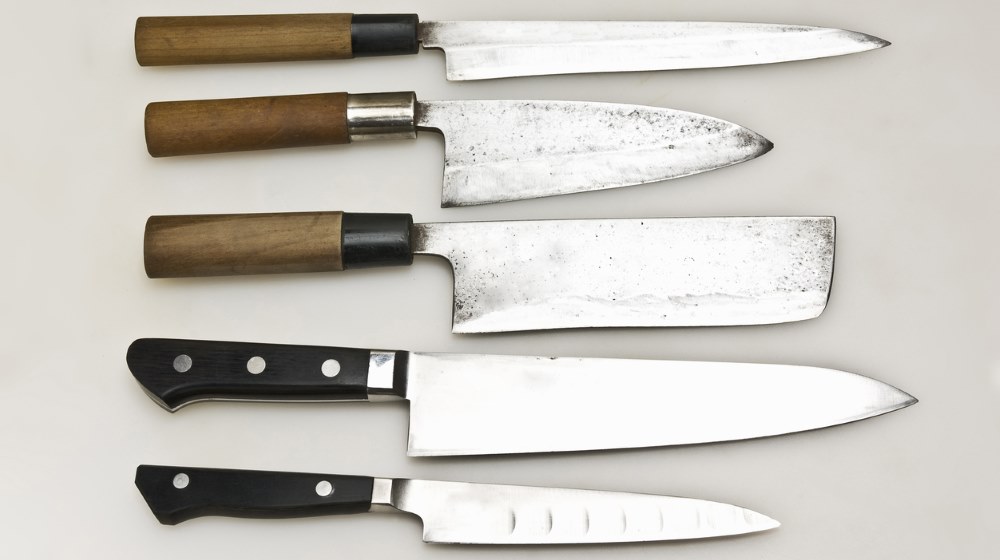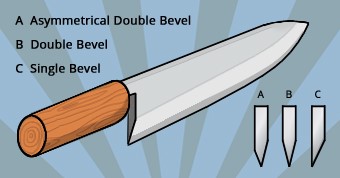While German blades are typically finished with a machine Japanese blades are almost always hand-honed and hand-refined. The curve begins at the bolster and extends till the tip of the knife blade.
 What S The Difference Between German And Japanese Knives Japana Home
What S The Difference Between German And Japanese Knives Japana Home
Usually German knife edges are sharpened on both sides of the blade meaning the edge comes to a symmetrical peak allowing for right- or left-handed cuts without incident.

Japanese knives vs german knives. Standard German knives usually have an HRC of around 55 or 56. However that same harder steel is less durable and. Though there are always exceptions the main difference between Japanese and German blade finishes is that German knives are smoother while Japanese knives have more texture.
This is quite soft and means that youre more likely to bend the knife than you are to chip it. Henckels are known for manufacturing knives that are more robust. German knives come in around 57 on the scale whereas Japanese knives are closer to 60 to 63.
But harder is not necessarily better. Japanese knife blades are thinner than their German counterparts allowing for a sharper edge typically in the range of 1516 degrees compared to 20 degrees in Western-style knives. Aside from the small differences in layout Japanese knives are extremely distinct from German knives in regards to design angle tang blade substance and manage design.
This curved design makes it very useful for more rigorous cutting activities like mincing. The angles on the German knives are usually about 20 degrees per side. Japanese knives historically focus on a high Carbon content whereas German knives focus on durability.
While these differences can be quite noticeable you should still get whichever type of knife appeals to you. There is a very visible and distinct difference between the shape of a German and a Japanese knife. And the two ie German-made and Japanese-made western-style knives probably have more similarities than.
Japanese knives are far harder than german knives. The blades utilize more steel that Japanese knives which makes the German knives heavier. Traditionally German chef knives are ambidextrous while Japanese knives are not.
A typical German knife is more tapered curved. Which is better Japanese Knives or German and French KnivesProbably we will never know which is better but they are different and the main difference between these knives is the blade. This means there is almost no curve to its balde and it has a steeper edge angle.
Harder Japanese knives will hold an edge better. There are stylistic differences in a standard western style chefs knife compared to a standard Japanese all purpose knife. Japanese vs German Knives.
Partial tangs are not as rugged as a full tang so you probably wouldnt want to use a partial tang knife to carve the Thanksgiving turkey. The harder a knife is the more possibility of it chipping especially so when Japanese knives are sharpened at a steeper angle or are using a single bevel. And there is a very simple reason for this.
Japanese knives more often than not have no bolster and the tangs vary between knife makers. As a result pretty much any quality German knife will be made from a good stainless steel. They are made using harder steel than their western counterparts and are rated around 60 to 61 on the Rockwell scale.
The additional material in German or Western-style knives is noticeable in two main areas. Most of the Japanese knives are straighter than the German ones. Japanese knives come in all different shapes sizes steel types blade types angles bevels and so on but the ones were talking about when we compare German knives to Japanese knives are western-style knives that are made in Japan.
The Japanese steel blades used in production is harder than German steel with a Rockwell rating between 60 to 62 on the scale for brands like Shun. Japanese knives are generally lighter and sharper than their German counterparts. German Vs Japanese Knives.
German knife makers like Wüsthof Victorinox and Zwilling JA. The tang and the bolster. Japanese knives for the most part have no bolster and the tangs vary based on the knife maker.
As a general rule Japanese knives do rust more easily than German knives although this difference is decreasing. Generally speaking German knives use softer steel and are heavier than their Japanese counterparts. German knives are generally full-tang the metal extends all the way to the end of the handle whereas Japanese knives have partial tangs the metal of the knife ends in the middle of the handle.
Its in the edge of. There are only a few differences when it comes to the Japanese and German knives so theyre somewhat similar. German knives usually double sided meaning they are symmetrically sharpened on both sides of the blade.
Since theyre thinner theyre a little more prone to the tip breaking or the blade chipping so Japanese knives. German knives are heavier and more forgiving while Japanese knives are lighter sharper and require more careful handling. Japanese knives are also more likely to employ patterns such as a hand-pounded Damascus finish.
The Big Difference To summarize.
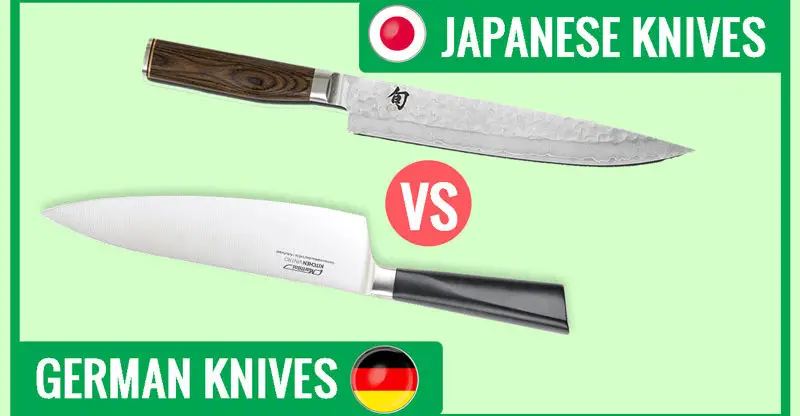 German Vs Japanese Knives Who Makes The Best Betterfood Co
German Vs Japanese Knives Who Makes The Best Betterfood Co
 What S The Difference Between German And Japanese Knives Japana Home
What S The Difference Between German And Japanese Knives Japana Home
Know Your Knives Buying Knives Taking Care Of Them House Blog
 Japanese Vs German Knives Differences Similarities Pros Cons Prudent Reviews
Japanese Vs German Knives Differences Similarities Pros Cons Prudent Reviews
 What S The Difference Between German And Japanese Knives Kitchn
What S The Difference Between German And Japanese Knives Kitchn
 Japanese Gyuto Vs German Chef Knife Youtube
Japanese Gyuto Vs German Chef Knife Youtube
![]() What S The Difference German Vs Japanese Kitchen Knives Hiconsumption
What S The Difference German Vs Japanese Kitchen Knives Hiconsumption
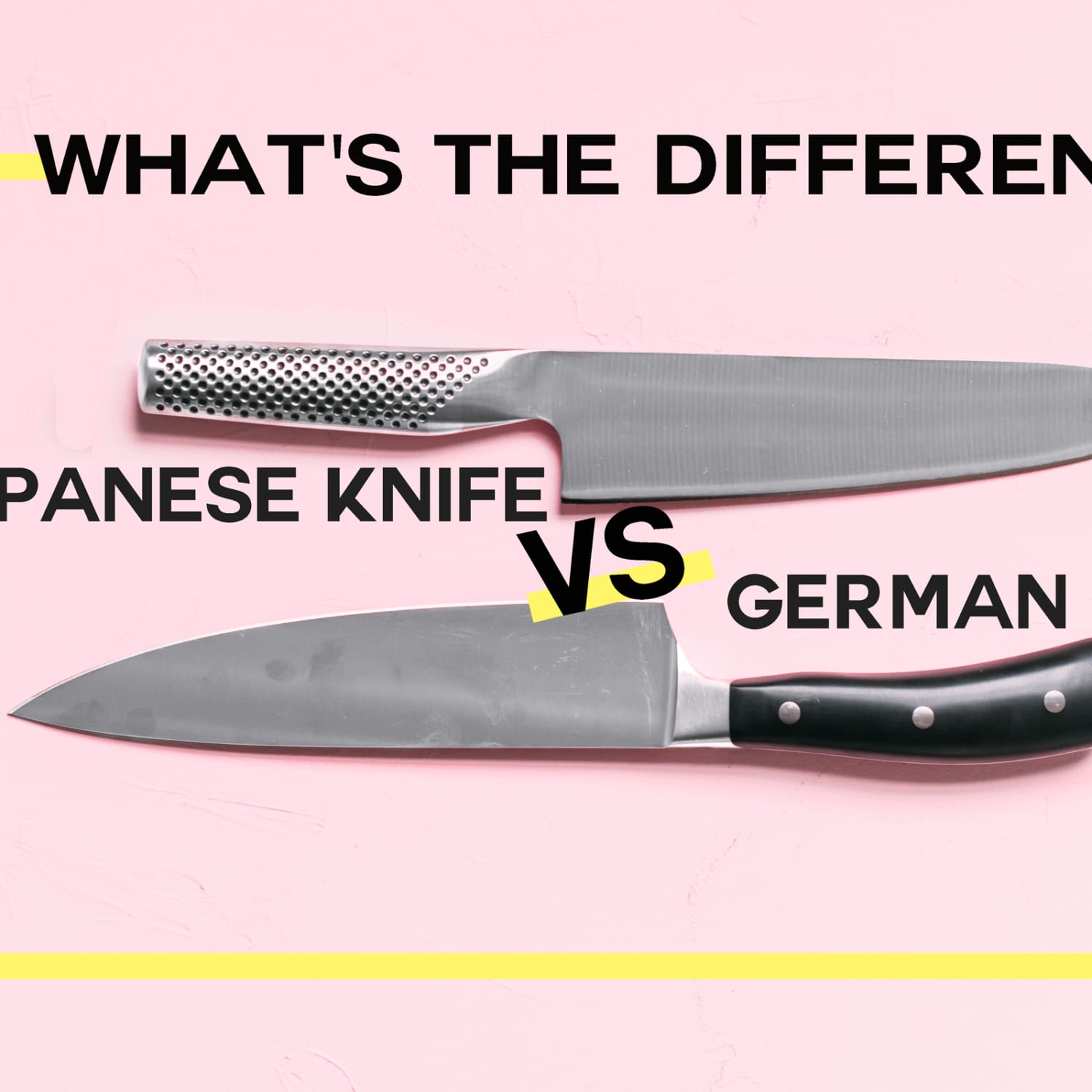
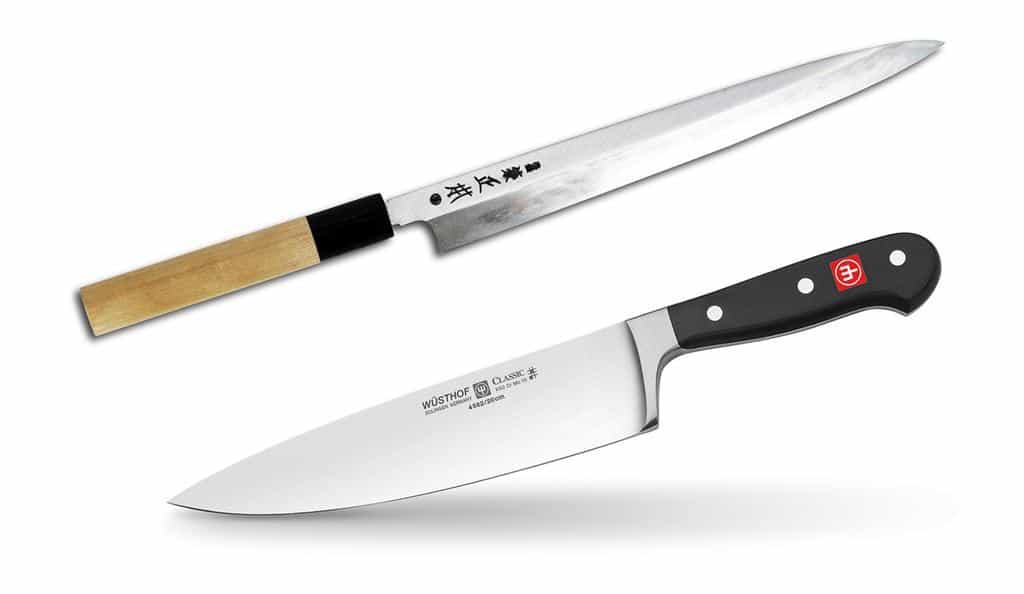 All You Need To Know About Japanese Knives The Chef Dojo
All You Need To Know About Japanese Knives The Chef Dojo
 Japanese Knives Vs Western Knives Pots Knives And Recipes
Japanese Knives Vs Western Knives Pots Knives And Recipes
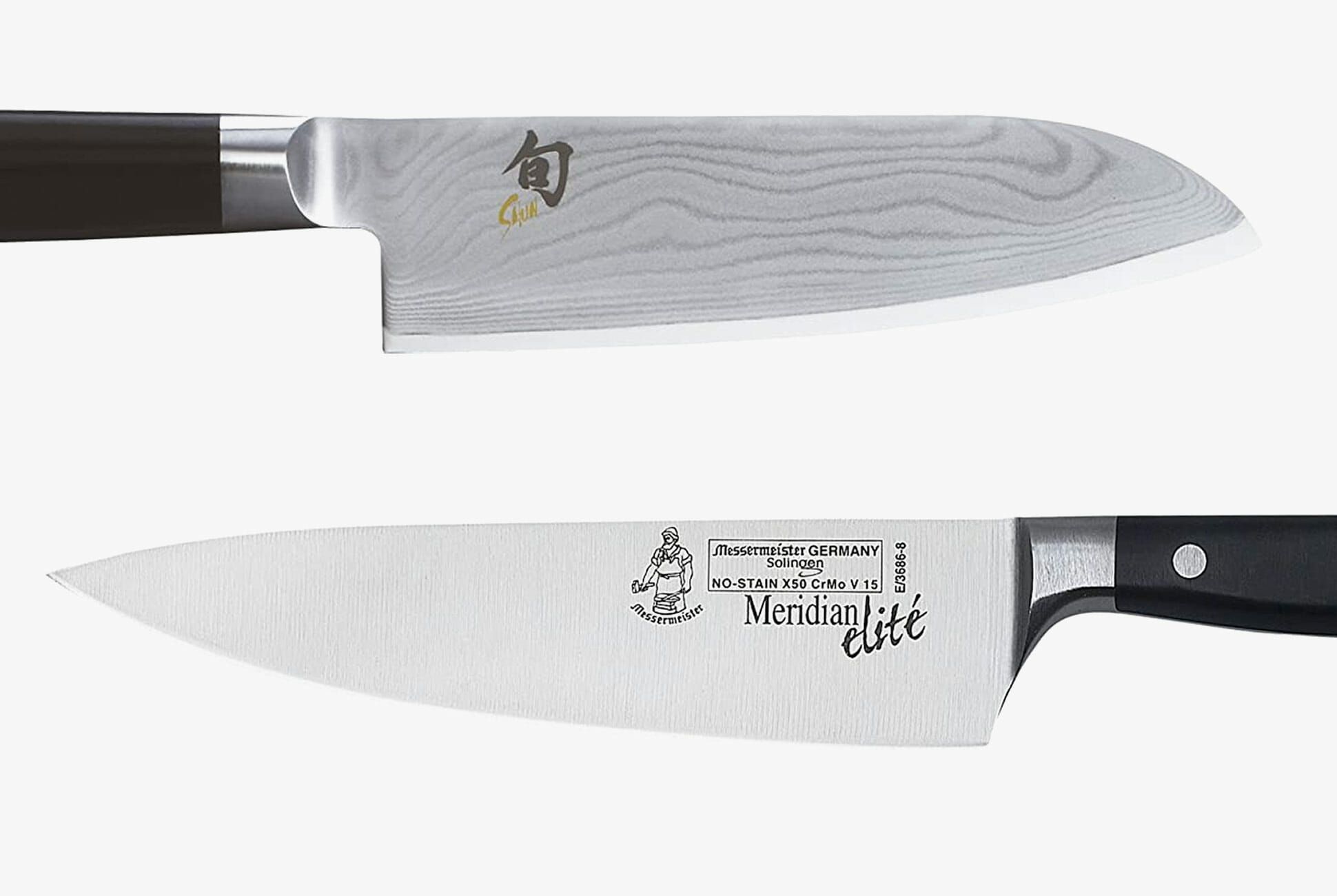 What S The Difference Between German And Japanese Knives Gear Patrol
What S The Difference Between German And Japanese Knives Gear Patrol
 Japanese Knives Vs German Knives Who Has The Edge In The Kitchen
Japanese Knives Vs German Knives Who Has The Edge In The Kitchen
